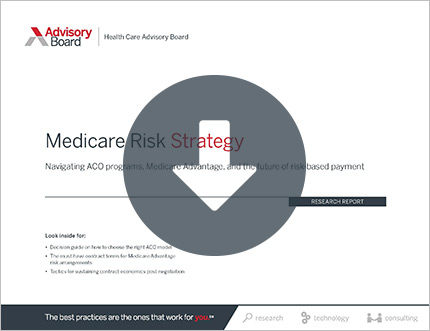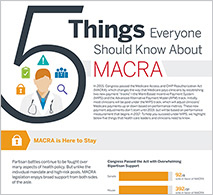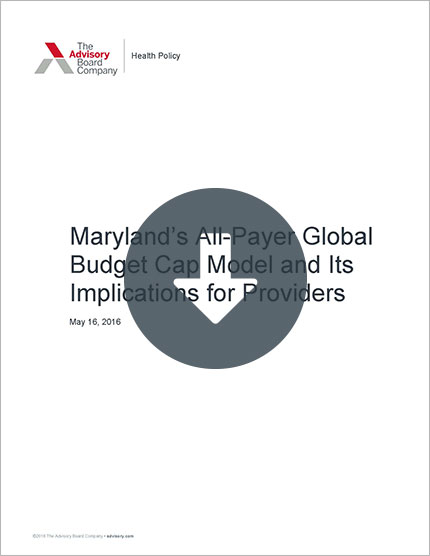Auto logout in seconds.
Continue LogoutMaryland Gov. Larry Hogan (R) on Monday announced that CMS has approved the state's request to extend and expand its all-payer model.
Learn more: Get an in-depth look at Maryland's all-payer model
How the model works
Maryland had a unique payment system for nearly 40 years under which all payers reimbursed hospitals at the same rates, which were set by a state commission.
But facing rising health expenditures and high readmission rates, CMS and Maryland in 2014 reached a five-year deal that went even further. Under the setup, all payers in the state set annual global budgets for hospitals to cover both inpatient and outpatient care. The idea was that the fixed, predictable revenues would give hospitals flexibility to invest in care improvements and make care more valuable for patients and payers.
The all-payer program was voluntary, but within six months, every hospital in the state signed up to scrap fee-for-service reimbursement.
CMS approves extension, expansion of all-payer model
Hogan said CMS has approved the state's proposal to extend its all-payer model for another five years and expand the program beyond hospitals. Under the expansion, the all-payer model starting Jan. 1, 2019, will also apply to some doctors' visits and other outpatient services, such as long-term care. Community health care providers will be able to choose whether they want to participate in the model.
According to a release, the updated model will:
- Encourage care coordination among hospital and non-hospital settings, including among long-term and mental health care providers;
- Establish care and quality improvement goals and provide incentives for providers to meet those goals;
- Facilitate and encourage programs that concentrate on Maryland residents' "unique needs" throughout the state and among "key demographics";
- Focus community and other resources on population health efforts "to help address opioid use and deaths, diabetes, hypertension, and other chronic conditions"; and
- Provide resources for "care that is focused on the patient" and bolster primary-care teams so they can "improve individual patient outcomes."
Donna Kinzer, executive director of the Maryland Health Services Cost Review Commission, said the model will count as an alternative payment model under MACRA. According to Axios' "Vitals," Maryland officials have estimated that expanding the all-payer model could save as much as $1 billion over the next five years.
Sen. Ben Cardin (D-Md.) said the model "can show other states how to successfully reward quality over quantity by moving away from 'per admission' and concentrating on best managing a patient's short-term and long-term care."
Providers welcome model's expansion
Health care providers in Maryland praised the model's extension and expansion.
Bob Atlas, president and CEO of the Maryland Hospital Association (MHA), said, "Maryland's hospitals stand ready and committed to continue our work with the state by engaging our care partners to meet the health care needs of every Marylander—allowing them to live healthier, more fruitful lives."
Jim Reiter, a spokesperson for MHA, separately added, "The fact is you have to include the doctors and the nursing homes and the people in the community because that is where care needs to be."
Joseph DeMattos—president of the Health Facilities Association of Maryland, which represents skilled nursing facilities, sub-acute care facilities, assisted living programs, and continuing care facilities—said the new model will allow nursing homes to be more involved in their patients' care. "It gives us the opportunity to transition from being the vendors of hospitals to being the partners of hospitals," he said.
Gene Ransom—CEO of MedChi, the Maryland State Medical Society—said, "It's in everybody's interest to keep this going because we get a lot of benefits from it." Ransom added, "Doctors are definitely going to sign up for this" (Baker, "Axios," Vitals, 5/15; Hogan release, 5/14; McDaniels, Baltimore Sun, 5/14; Dickson, Modern Healthcare, 5/14; Witte, AP/U.S. News & World Report, 5/14).
Learn more: Get an in-depth look at Maryland's all-payer model
The latest iteration of Maryland's all-payer rate-setting model produced nearly $116 million in Medicare savings in its first year of operation.
Get an in-depth look at the model, including details on its history and evolution, lessons learned to date, and broader implications for the future of payment reform.
Don't miss out on the latest Advisory Board insights
Create your free account to access 1 resource, including the latest research and webinars.
Want access without creating an account?
You have 1 free members-only resource remaining this month.
1 free members-only resources remaining
1 free members-only resources remaining
You've reached your limit of free insights
Become a member to access all of Advisory Board's resources, events, and experts
Never miss out on the latest innovative health care content tailored to you.
Benefits include:
You've reached your limit of free insights
Become a member to access all of Advisory Board's resources, events, and experts
Never miss out on the latest innovative health care content tailored to you.
Benefits include:
This content is available through your Curated Research partnership with Advisory Board. Click on ‘view this resource’ to read the full piece
Email ask@advisory.com to learn more
Click on ‘Become a Member’ to learn about the benefits of a Full-Access partnership with Advisory Board
Never miss out on the latest innovative health care content tailored to you.
Benefits Include:
This is for members only. Learn more.
Click on ‘Become a Member’ to learn about the benefits of a Full-Access partnership with Advisory Board
Never miss out on the latest innovative health care content tailored to you.



